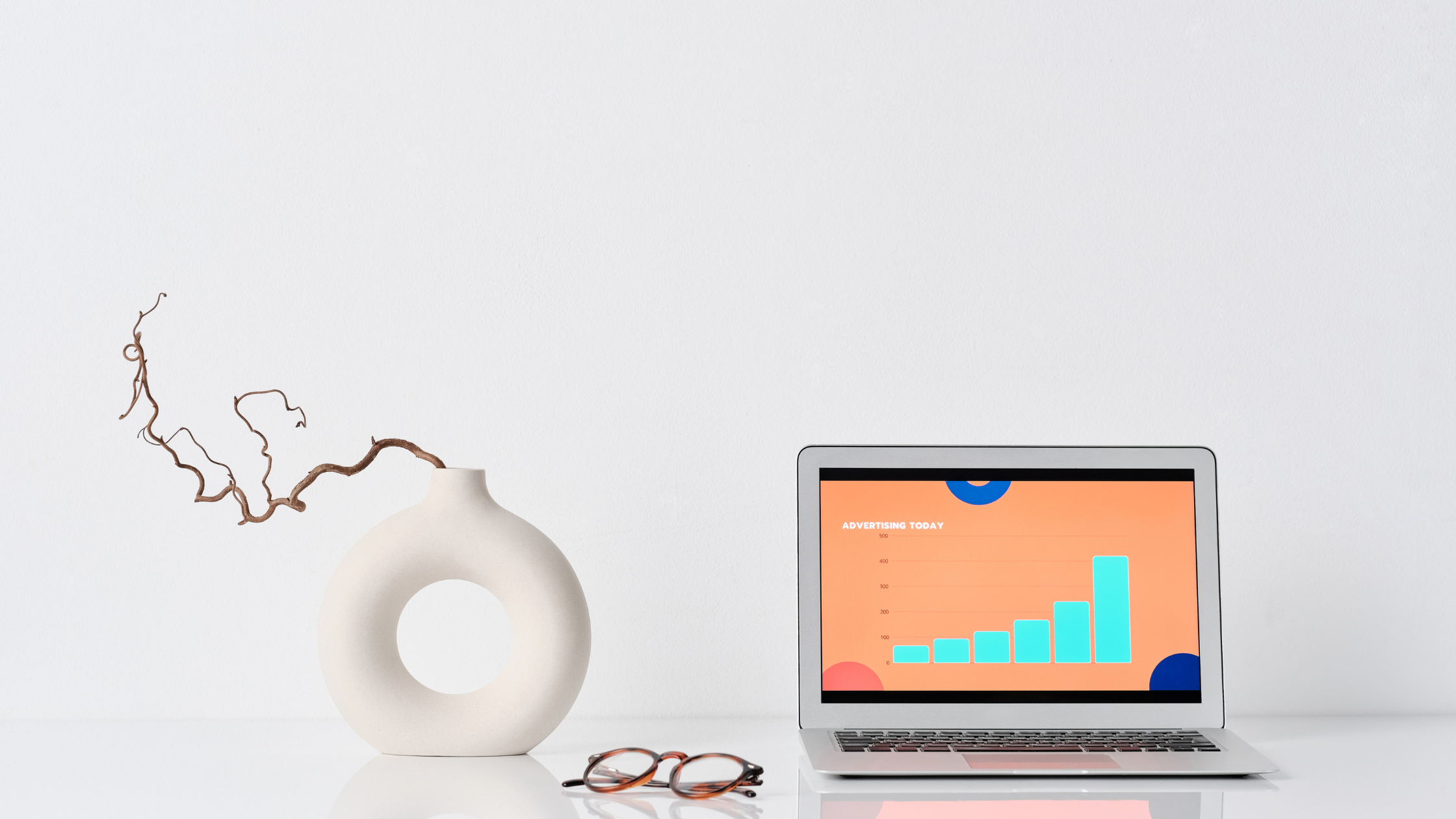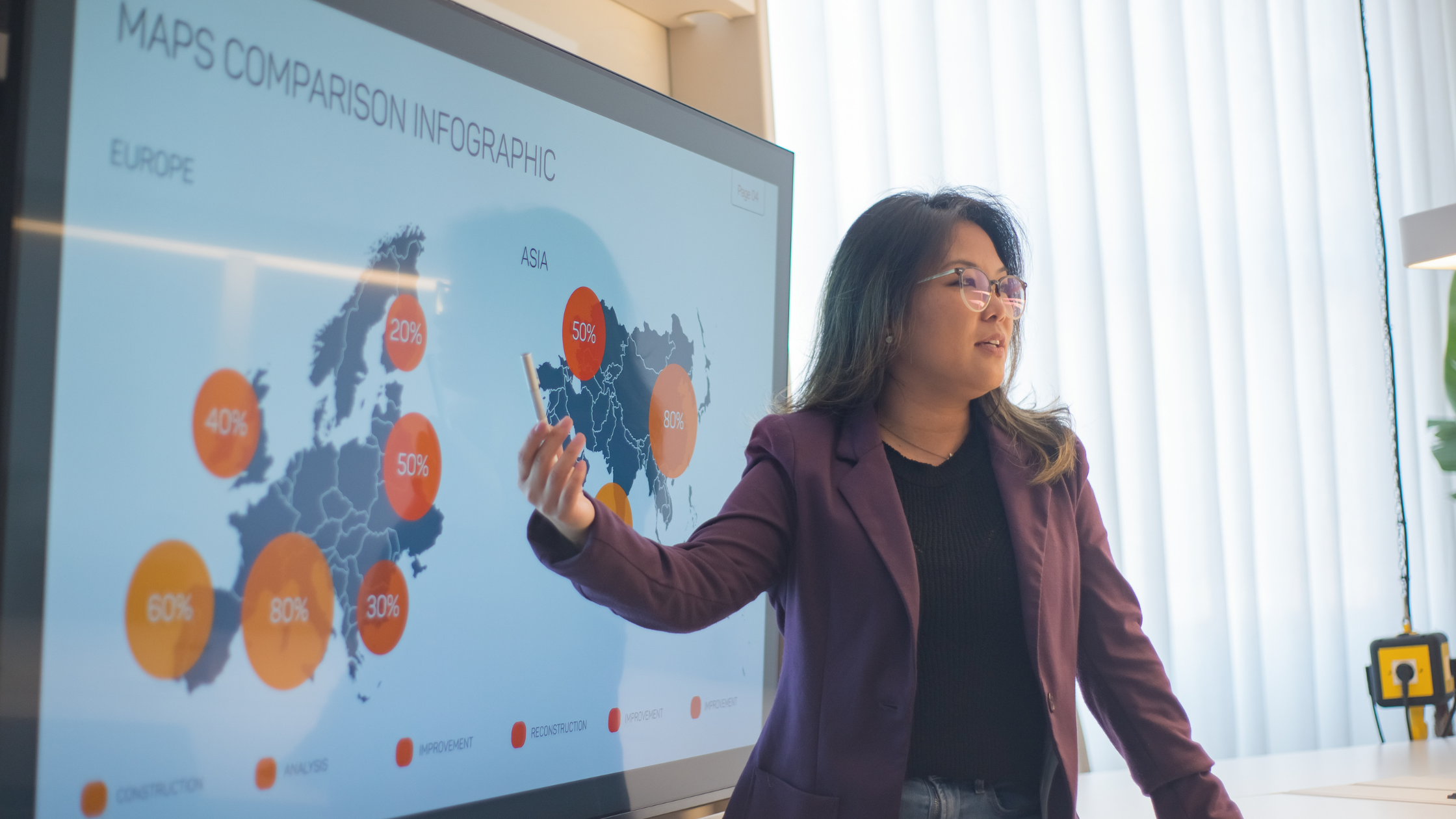The Role of Graphics in Effective Communication:
Graphics are integral to graphic design and visual communication, enabling clear and engaging message delivery. Visual elements such as charts, graphs, icons, infographics, and images simplify complex information and enhance audience understanding. Graphics also play a pivotal role in building brand identity. Consistent use of colors, typography, and imagery across various platforms strengthens brand recognition, making it easier for customers to distinguish a company from its competitors.
Incorporating visuals into written content can significantly increase engagement and improve memory retention. Complementary images or videos make it more likely that readers will remember key points long after they’ve finished the content. Using graphic design tools—whether free or premium—can elevate the effectiveness of these visuals, enhancing communication and impact.
Understanding Graphic Design: History, Principles, and Applications:
A grasp of graphic design history and principles is fundamental for creating impactful designs. Knowledge of key movements and figures in graphic design helps designers appreciate the field’s evolution. Mastering design principles, such as color theory, typography, and composition, is essential for crafting visually compelling and clear messages.
Graphic design applications are diverse, ranging from logos and brochures to websites and video game interfaces. Digital graphic design leverages images, graphics, and text to engage audiences effectively. Whether using free graphic design software or top-tier programs, a solid understanding of design principles is crucial for producing visually appealing and effective communications.
Selecting the Right Typeface for Your Project:
Choosing the right typeface is a critical component of graphic design. Consider readability, legibility, style, and tone when selecting a typeface. Serif fonts are suitable for formal projects, while sans-serif fonts often work better for modern designs. Typography should establish a clear hierarchy and contrast, using different sizes and weights to distinguish between headlines, subheadings, and body text. Avoid overusing fonts to prevent clutter and confusion. The chosen typeface should enhance the message and ensure ease of reading.
Creating an Effective Marketing Campaign:
Visuals are vital in a marketing campaign, enhancing its effectiveness. Understanding the target audience allows for tailored messaging and visuals that resonate directly with them. A consistent brand identity across all campaign materials, including graphics and advertisements, builds trust and recognition.
Tracking campaign success through analytics tools is essential. Analyzing website traffic and engagement rates provides insights into what resonates with the audience, enabling adjustments as needed. Employing graphic design software and digital techniques can significantly enhance the visual appeal and impact of marketing efforts.
Improving Your Online Presence:
Optimizing your website’s visual design is key to enhancing your online presence. Utilizing graphic design tools and techniques can create an aesthetically pleasing and user-friendly site. Effective color schemes, typography, and layouts convey your brand’s personality and ensure readability. Images that resonate with your target audience improve the user experience. The best online graphic design programs can help achieve these goals, making your website more engaging and visually appealing.
Essential Skills for Graphic Design:
To start in graphic design, creativity is crucial, along with a strong eye for design to develop ideas that capture attention. Effective communication skills are necessary for collaborating with clients and team members. Technical proficiency in design software like Photoshop and Illustrator is essential, as is knowledge of typography, color theory, composition, and web design. Problem-solving skills and adaptability are important for overcoming design challenges and delivering high-quality work. Staying updated with design trends and software tools also provides an edge in the industry.
Developing a Personal Style in Graphic Design:
Developing a personal style is essential for standing out as a graphic designer. Begin by mastering design fundamentals such as color theory, typography, and composition. Experiment with new techniques and styles to find what resonates with you. Study other designers’ work for inspiration and regularly practice to maintain consistency. Taking on challenging projects or collaborating with other creatives can also help refine your style.
Choosing Graphic Design Software:
Selecting the right software is critical for creating high-quality graphics. Adobe Photoshop is widely used for photo editing and design creation due to its extensive features. Illustrator specializes in vector-based designs, making it ideal for logos and illustrations. For a more accessible option, Canva offers web-based tools with ready-made templates for various design needs. It allows customization with stock images and fonts at no extra cost.
Evaluating Graphic Design Projects:
When deciding which projects to pursue, consider how well they align with your personal brand and expertise. Assess the scope, timeline, and budget to ensure they are manageable. Evaluate the creative opportunities each project offers and its potential impact on your career growth. Projects that present new challenges or skills and opportunities for future collaborations or referrals can be particularly valuable.
Tips for Beginner Graphic Designers:
For beginners, focusing on simplicity often leads to effective designs. Experiment with typography to enhance readability and visual interest. Mastering contrast helps create hierarchy and draw attention to key elements. These basic techniques can help beginners produce visually appealing and effective designs.
Recommended Books for Learning Graphic Design:
Several books can help beginners learn graphic design fundamentals. “Thinking with Type” by Ellen Lupton covers typography essentials, including font selection and layout. “The Elements of Graphic Design” by Alex W. White explores principles like color theory and balance, offering real-world case studies. “Graphic Design School” by David Dabner is a comprehensive resource covering various design techniques and software.
Basics of Graphic Design:
Key graphic design basics include color theory, typography, and composition. Understanding how colors interact and affect mood is fundamental. Typography involves choosing and arranging fonts to enhance readability and visual appeal. Composition refers to arranging elements effectively to convey a message, including concepts like contrast and balance. Branding, or creating consistent visual elements, is also crucial for establishing recognition.
Fundamentals of Design:
The fundamentals of design include line, shape, color, texture, space, and form. Each element contributes to the overall design. Lines create structure and depth, shapes convey meaning, and colors evoke emotions. Texture adds dimension, space creates emphasis, and form gives a three-dimensional quality. Mastery of these elements enables designers to create effective and visually appealing designs.
Impact of Color on Design Layout:
Color affects design layout by influencing emotions and perceptions. Warm colors (e.g., red, orange) are associated with energy, while cool colors (e.g., blue, green) evoke calmness. High-contrast color combinations draw attention to important elements, while low-contrast combinations create subtle effects. Understanding how color affects layout is essential for creating engaging and effective designs.
Influence of Typography on Design:
Typography significantly influences design through the arrangement of text. The choice of typeface affects the mood and readability of a design. Typography establishes hierarchy, guiding the viewer’s eye and emphasizing important information. Using different font sizes, weights, and styles helps organize content and create visual interest, impacting the effectiveness of any design project.
Elements of a Successful Design Process:
A successful design process involves research, brainstorming, collaboration, and iteration. Research helps understand client needs and target audience. Brainstorming generates creative ideas, while collaboration ensures alignment with stakeholders. Iteration involves refining designs based on feedback. Using online graphic design programs and tools enhances these elements, ensuring a smooth design process.
Influence of Light and Shadow in Design:
Light and shadow are crucial for creating depth and texture in designs. Manipulating light sources and shadows adds realism or abstraction. Effective shading techniques can create depth, while flat colors produce a more straightforward impression. Designers must consider how lighting conditions affect design perception to ensure optimal viewing experiences.
Understanding and applying these principles can help in creating effective, visually appealing designs across various media and platforms.
Principles of Composition in Design:
In graphic design, effective composition is guided by several key principles:
- Balance: Achieving balance involves arranging elements so that no part of the design feels disproportionately heavy or light. Balance can be symmetrical (mirror-like) or asymmetrical (different but balanced). Both types aim to create a sense of equilibrium and ensure visual stability.
- Hierarchy: This principle dictates the visual order of information, helping viewers process content logically. By varying size, color, and placement, designers can direct focus and guide the viewer through the design in a structured manner.
- Contrast: Contrast enhances readability and highlights key elements by showcasing differences in color, size, shape, or texture. It helps draw attention to specific areas and can also add visual interest and depth to a design.
- Harmony: Harmony ensures that all elements within a design work together cohesively. It is achieved by maintaining a consistent style and ensuring that elements complement rather than clash with each other.
- Unity: Unity refers to the coherence of the design, making sure all elements feel part of a whole. It is achieved through consistent use of colors, fonts, and visual motifs.
- Repetition: Repeating certain elements, such as colors, shapes, or patterns, helps create a sense of consistency and reinforces the overall theme of the design.
- Proportion: Proportion relates to the size and scale of elements in relation to each other. Proper proportion ensures that no element overwhelms or underplays the design.
Understanding and applying these principles helps designers create visually appealing and functional designs that effectively communicate their intended message.
The Role of Balance and Contrast in Layouts:
Balance and contrast are fundamental in constructing effective layouts:
- Balance: Ensures that visual elements are evenly distributed across the design, preventing any one part from dominating. This balance can be achieved through symmetrical arrangements (mirrored elements) or asymmetrical arrangements (different elements that still achieve visual equilibrium). Balance helps in creating a stable and harmonious design.
- Contrast: Adds visual interest and improves readability by emphasizing differences between elements. Effective use of contrast highlights important parts of the design, guides viewer attention, and enhances the overall visual impact. It can be achieved through variations in color, size, and shape.
Combining these elements ensures that designs are both engaging and easy to navigate, facilitating effective communication of the intended message.
The Impact of White Space in Design:
White space, or negative space, refers to the empty areas around and between design elements. Its strategic use enhances a design in several ways:
- Improves Readability: White space helps organize content, making it easier for viewers to read and comprehend information. It prevents the design from feeling cluttered and overwhelming.
- Enhances Visual Appeal: Ample white space contributes to a cleaner, more modern look. It allows individual elements to stand out and prevents designs from feeling heavy or cramped.
- Guides Viewer Attention: By placing white space around key elements, designers can direct the viewer’s eye and highlight important information, improving the overall effectiveness of the design.
Incorporating white space thoughtfully can elevate the aesthetic quality and clarity of a design, making it more effective in communicating the intended message.
Visual Communication vs. Graphic Design:
While graphic design and visual communication overlap, they serve distinct purposes:
- Graphic Design: Focuses on creating visual content using typography, color, images, and other elements to convey a specific message or idea. It includes designing logos, branding materials, print layouts, and advertisements.
- Visual Communication: Involves conveying information using visual aids such as charts, diagrams, and videos. It emphasizes simplicity and clarity in presenting complex data, making it easier for viewers to understand.
Graphic designers concentrate on aesthetic appeal, while visual communicators focus on clarity and ease of understanding.
Visual Communication vs. Web Design:
Visual communication and web design are interconnected but serve different functions:
- Visual Communication: Encompasses creating effective designs for various media, including print and digital platforms. It emphasizes using visuals to communicate messages clearly.
- Web Design: Specifically involves designing and developing websites. It focuses on creating visually appealing, user-friendly sites, and includes optimizing images, coding with HTML/CSS, and ensuring usability and accessibility.
Both fields require a solid understanding of design principles and software tools, but web design is more focused on digital platforms and user experience.
Visual Communication vs. UI/UX Design:
UI (User Interface) and UX (User Experience) are related but distinct from visual communication:
- UI Design: Involves designing the layout and elements that users interact with, such as buttons, menus, and icons. It focuses on creating a visually appealing and functional interface.
- UX Design: Encompasses the overall experience users have with a product or service. It involves understanding user needs and behaviors to create a seamless and enjoyable experience.
Visual communication enhances both UI and UX by using effective visuals to facilitate navigation and understanding. The goal is to create interfaces that are not only aesthetically pleasing but also intuitive and effective in meeting user needs.
Graphic Design and Branding:
Graphic Design and Branding focus on creating a visual identity for companies or individuals:
- Graphic Design: Involves using visual elements like color, typography, and imagery to convey a specific message or idea. It includes designing marketing materials, advertisements, and other visual content.
- Branding: Aims to create a cohesive and recognizable identity for a business or individual. This includes developing logos, color schemes, and other elements that represent the brand’s values and goals.
Effective branding through graphic design involves creating a consistent visual identity that resonates with the target audience and reinforces the brand’s message.
Visual Communication and Branding:
In visual communication and branding, the focus is on translating a brand’s message into visual elements:
- Visual Communication: Utilizes graphics to effectively communicate a brand’s message across different media. This includes creating a unified look and feel through logos, color schemes, and typography.
- Branding: Involves understanding the psychological impact of colors and shapes and ensuring that these elements align with the brand’s values. Effective branding creates a strong and memorable visual identity.
By mastering these principles, businesses can develop a powerful and cohesive brand presence that stands out in a competitive marketplace.
Graphic Software for Designers:
Graphic designers commonly use the following software:
- Adobe Photoshop: Ideal for photo editing and creating raster graphics. It offers tools for manipulating images, applying filters, and working with layers.
- Adobe Illustrator: Used for creating vector graphics like logos and icons. It allows for precise drawing and scaling without loss of quality.
Adobe InDesign: Perfect for designing complex layouts, such as magazine spreads and brochures. It offers advanced typography and layout options.
Software for Web and App Designers:
Web and app designers use tools such as:
- Figma: A collaborative interface design tool for creating and prototyping web and app designs. It supports vector networks, auto-layouts, and interactive components.
- WordPress: A content management system that simplifies website creation with customizable themes and plugins. It is widely used for building and managing websites.
- Elementor: A visual page builder plugin for WordPress, allowing designers to create custom layouts with drag-and-drop functionality.
Motion Graphics:
Motion Graphics involves animating graphic elements to create dynamic content. It’s used in commercials, films, and digital media to capture attention and convey complex ideas through movement.
- After Effects: A key software for creating motion graphics. It offers tools for animation, special effects, and transitions, making it essential for producing engaging content.
Digital Illustration:
Digital Illustration involves creating artwork using software tools like Adobe Illustrator, Photoshop, and CorelDRAW. It enables designers to produce high-quality, intricate graphics for various applications, including advertisements and packaging.
Mastering digital illustration techniques allows for precise and creative design, enhancing the visual impact of any project.
To Your Knowledge:
The integration of graphic design and visual communication is vital for crafting compelling and effective visual content across diverse media. Mastering principles such as balance, contrast, and white space, alongside a deep understanding of typography and color theory, ensures that designs not only capture attention but also convey messages with clarity. Tools like Adobe Photoshop, Illustrator, and Figma are essential for bringing creative concepts to life, while motion graphics and digital illustration add dynamic elements that enhance engagement and comprehension.
The continuous evolution of design software and methodologies underscores the importance of staying updated with industry trends and best practices. Whether creating branding materials, marketing campaigns, or user interfaces, a solid grasp of these fundamental principles and tools empowers designers to produce impactful and aesthetically pleasing work that resonates with audiences and reinforces brand identity.




